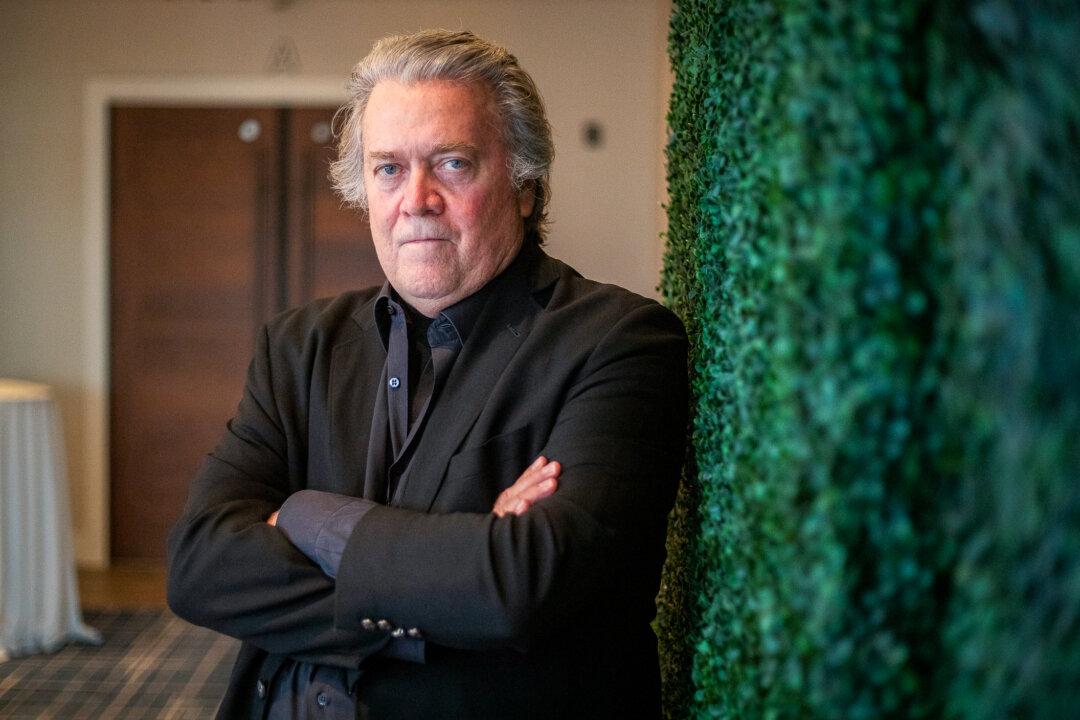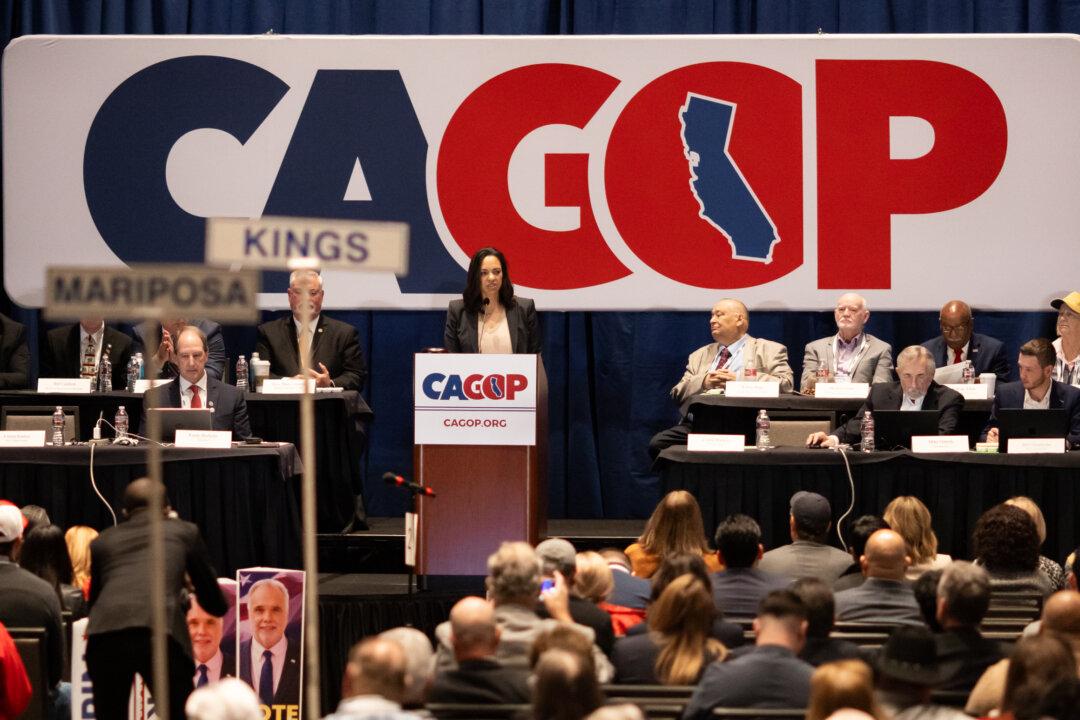Californians entered the jungle on March 3—the so-called “jungle primaries.”
The state’s primaries are different than in most states. In the statewide and legislative races, as well as U.S. Senate and U.S. House races, voters have a variety of candidates to choose from—regardless of party affiliation.
It’s one of only a few states that conducts its primaries this way. It means that as a result of the primaries on March 3, Californians in some districts may have a choice between two Democrats and no Republicans on the November ballot. Or—though less likely—two Republicans and no Democrats.
The term “jungle” refers to a free-for-all where the top two vote-getters, regardless of party affiliation, go on to compete in the general election.
The presidential race is an exception. Republican voters vote on Republican candidates. Voters who are registered as either Democrats or as having “no party preference” can vote for Democratic candidates.
The “jungle primary” system has been in place since 2012, with the hope that it would give a greater variety of candidates a fighting chance and prevent partisan deadlock in the legislature.
How It Began
In 2009, then-Governor Arnold Schwarzenegger backed the primary reform as a remedy for polarized politics, and as part of a concession to end a 100-day budget impasse. It went on the ballot in 2010, and voters supported it, so it took effect in 2012.The idea was that it would lead to more moderate choices. Democratic candidates would have to appeal to Republican voters as well as Democrats and Independents. Republicans would likewise have to appeal to voters outside their party.

In most races since the reform, it has turned out that one Democrat and one Republican emerge as the top two contenders anyway. But each time, in some districts, voters end up seeing same-party contests. And it’s usually a choice of two Democrats.
Dislike of the System
“Short of rolling the dice or picking names out of a hat, there is no electoral system more likely to produce random results than the top-two primary,” said Republican strategist Ron Nehring.In a recent interview with The Epoch Times, Nehring—who has opposed the primary reform from day one—reiterated his stance, saying it’s been worse than people anticipated. He cited California’s last two U.S. Senate elections as examples.
In 2016, the U.S. Senate election was also a choice between two Democrats, Kamala Harris and Loretta Sanchez.
“These were North Korean-style elections,” he said. “You can elect a Democrat or you can elect a Democrat.”
Victor Davis Hanson, a senior fellow at the Hoover Institution, said that jungle primaries are unfair because they have led to a one-party state and have depressed voter turnout.
“If a person doesn’t really have a choice at the grassroots level in the congressional district, they just don’t turn out,” Hanson told The Epoch Times.

The suggestion is that voters become apathetic in same-party races and they leave the ballots blank for those.
Hanson said some Democratic candidates have appealed to would-be Republican voters by suggesting they are more “Republican” than their fellow Democrat contenders. But that this tactic is not representative of true Republican platforms. Their platforms still favor the Democratic agenda.
Eric C. Bauman, former chair of the California Democratic Party, has long been vocal about his dislike of the system.
He’s had to convince Democratic candidates to drop out of the races so as not to divide the Democrat vote across too many candidates. If Republican voters can unite behind one or two Republican candidates, they have a chance of shutting Democrats out in a district, even if Republican voters are a minority there. The Democrats have to ensure their votes aren’t spread too thinly between many candidates.
Praise of the System
Tony Quinn, a political analyst who served on the Fair Political Practices Commission for five years, supports the state’s top-two primary system.“I think it’s the best thing that ever happened to California,” Quinn told The Epoch Times. “Now you give the people a real choice. I think it worked out well. I think the public likes it. … What you’re getting is a real contest when the majority of voters are Democratic.”
He acknowledged California is now a “one-party state.” He said, “The vast majority of our districts are heavily Democratic, and it’s absolutely ridiculous in San Francisco to have a Republican in a run-off for a legislative district when Republicans are less than 10 percent of registered voters.”
Others have also made the argument that, under the old primary system, Republican voters would be guaranteed to have Republican candidates on the November ballot, but those candidates had little chance of actually being elected to office by voters in the blue state.
On the other hand, with the top-two system, even if it’s a choice between two Democrats, one of those Democrats is more likely to be an acceptable choice for Republican voters while still having a chance of winning.
“The key is it’s less extreme,” said Christian Grose, a political science professor at the University of Southern California, in an interview with NPR. “So there are still Democrats that are getting elected in most statewide offices and most legislative districts, but those Democrats are just a little bit less liberal than the otherwise very liberal candidates who might have won in a different primary system.”
GOP ‘Now the Third Party’
Political analyst Sherry Bebitch Jeffe said the jungle primaries have unfairly benefited the Democrats over the Republicans.Jeffe, a retired public policy professor at the University of Southern California, prefers traditional primaries in which each party’s registered members vote on their own candidates and each party is represented on the general election ballot.
“I don’t think it’s fair to have a top-two primary. Period,” Jeffe told The Epoch Times.
“There are more no-party-preference voters in California than there are Republicans,” she said. “The Republicans are now the third party in California.”
California Republican Party Chairman Bryan Watkins told The Epoch Times, “The Democrats had said this was a way for Independents and moderates to have more of a voice in the system.” In his view, “It hasn’t had that effect.”
Voter turnout is usually higher in the general election than the primaries, and higher still in presidential election years. In 2018, about 7 million voters participated in California’s primaries, or about 28 percent of eligible voters. In the general election, over 12 million Californians, or about 50 percent of eligible voters, cast ballots.
That means the lower proportion of voters who get out for the primaries are deciding in some districts whether those House seats will be taken by Democrats or Republicans.
That choice is made before the larger portion of voters get out for the general elections in November.
Jeffe said its unfair, but “where in the rules book does it say you have to play fair? It’s politics.”





